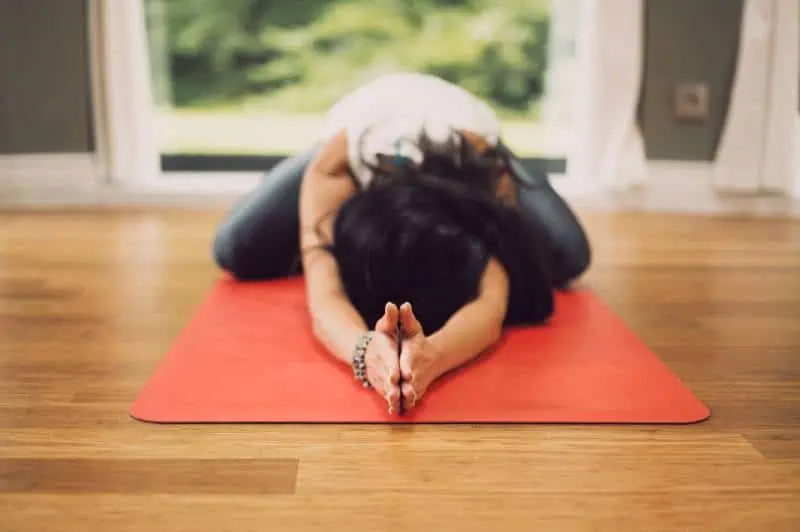If you describe yourself as ambitious, energetic, self-confident, and fiery, you may have the Pitta dosha constitution.
According to Ayurvedic philosophy, three energetic forces exist within all of us; Pitta, Kapha, and Vata. However, we don’t all have the same amount of these energies; instead, we typically have one or two that are dominant.
Those with Pitta dominance can possess outstanding qualities like determination, self-belief, and high intelligence. However, if the Pitta energy becomes excessive, Pitta people can develop unhealthy emotional patterns and negative psychological states.
Read on to learn how to tell if your Pitta energy is imbalanced. We’ll then look at ways to pacify Pitta to bring you back into alignment and equilibrium.
Contents
What Is The Pitta Dosha?

The three Ayurvedic doshas are responsible for specific bodily systems and processes. For example, Pitta governs digestion and body temperature regulation. It also plays a role in eye function (visual perception and color) and the complexion and condition of the skin.
Pitta is the energy of digestion and metabolism and is made up of fire and water elements. Pitta is hot, light, sharp, liquid, and mobile. It is associated with the summer and the digestive and transformative inner fire known as ‘Agni‘ in Ayurveda.
People who are Pitta dosha dominant may have the following qualities and characteristics.
- Medium height
- Naturally muscular, athletic build – but may lack flexibility
- Fast metabolism
- Soft, greasy, warm skin with a reddish, rosy complexion
- Naturally warm body temperature
- High energy levels – Pitta people generally require less sleep than others.
- Strong-willed and determined personality
- Great leadership qualities
- Competitive, goal-oriented nature
- High levels of self-confidence and self-assurance
- Sharp, bright intellect and the ability to learn quickly
What Happens If Pitta Increases?
If the pitta energy becomes too excessive, the positive qualities of Pitta can turn into negative traits. For example, healthy ambition can become an aggressive, competitive attitude toward others.
Likewise, when Pitta is balanced, a person will have excellent leadership skills, demonstrating dedication and passion that inspires the team. However, when Pitta is in excess, this person can become a problematic leader with a short temper who criticizes their employees.
Physically, the naturally fast metabolism can cause digestive upset. In addition, the warm, moist skin can turn oily and lead to acne and inflammation.
What Causes A Pitta Imbalance?

Excessive Pitta can be caused by various lifestyle, emotional, or physical factors. So let’s look at the most common reasons why people experience aggravated Pitta dosha.
Diet
Pitta imbalance is commonly caused by excessive consumption of spicy, oily, fried, salty, and fermented foods. Sour foods, such as acidic fruits and high quantities of red meat, can also increase Pitta. In addition, too much caffeine or alcohol can aggravate Pitta..
Hot Climates
Spending too much time in the sun or heat can raise Pitta. Most pitta people struggle in hot climates and prefer colder weather. Thus, when on vacation in a hot place, they often experience excess Pitta.
Over Working
Another reason pitta types experience an imbalance is an unhealthy work/life balance. Overworking and not spending enough time relaxing can significantly aggravate the pitta dosha. This is true for all jobs, including physically demanding and mentally taxing roles.
Over Exercising
Likewise, physical exhaustion due to too much exercise is not good for the pitta dosha. In addition, doing strenuous and dynamic fitness activities like running, aerobics, and boxing will overheat your system and cause more harm than good.
Loud, busy environments
Lastly, another common reason why balancing pitta may be required is if you spend your day in a loud, stimulating, competitive environment. Thus, if you work in a competitive sales office or a busy restaurant, you may need to make additional efforts to reduce Pitta.
Likewise, suppose your colleagues or household members are hyperactive or judgemental. If so, you’ll be more at risk of experiencing excessive heat in your body.
Symptoms Of Pitta Imbalance

Physical signs include:
- Red or irritated skin
- Heartburn or acid reflux
- Increased hunger due to overactive metabolism
- Digestive issues like diarrhea or loose stools
- Hot flashes or feeling extremely hot all the time
- Inflammation of the joints
- Bad breath
- Excessive sweating and strong body odor
- Very oily skin leading to clogged pores and acne
- Skin diseases such as eczema, rashes, or hives
- Hair loss
- Red, dry, or light-sensitive eyes
Mental and emotional signs include:
- Anger
- Getting easily frustrated and irritable
- Impatience
- Jealousy and envy
- Feeling the need to judge and criticize
- A strong desire to win, which can cause an aggressive nature toward others
- Perfectionist tendency
- Unhealthy work-life balance
- Headaches or migraines
How To Balance Pitta Dosha
If you think you may have a pitta imbalance, don’t worry, as there are several things you can do to reduce Pitta in your body. Here are some of the most effective and commonly used pitta balancing techniques among Ayurvedic practitioners.
Pitta Pacifying Foods

IIn general, a pitta diet should consist of cold and cooling foods. It should have very few fried, heavily salty, oily, or spicy foods as they all cause excess Pitta. Foods rich in bitter and astringent tastes are also beneficial.
Pitta pacifying foods include:
- Sweet fruits like grapes, watermelon, coconuts, avocados, and mangoes – Avoid sour fruits like grapefruits.
- Dairy products, however, sour, fermented products such as yogurt and sour cream, should be used sparingly.
- Coconut water
- Barley & oats
- Mint
- Leafy green vegetables
- Cucumber, rhubarb, rocket, asparagus, broccoli
- Sweet potatoes and pumpkin
- Olive oil, sunflower oil, and coconut oil
- Flaxseeds, coconuts, pumpkin seeds, sunflower seeds
- Mild, soothing spices like coriander, fennel, saffron, and cardamom. – Avoid hotter spices like ginger, cumin, and black pepper.
Along with eating foods listed above, you stick to a regular meal schedule. Fasting and missing meals can cause unhealthy physical symptoms in Pitta people, as long periods without food increases pitta fire.
Best Exercises For The Pitta Dosha

Opt for slow, mindful, cooling activities like yin yoga or a slow Hatha flow. If you already practice yoga, try replacing your sun salutations with moon salutations, as this sequence has a cooling effect rather than a heating one.
Also, minimize heat-building postures like the warrior poses and boat pose. Instead, opt for forward folds like Child’s pose and Pashchimottasana and gentle backbends like Bridge and Cobra.
Aside from yoga, dense, grounding exercises are suitable for a pitta imbalance. For example, swimming, hiking, and weightlifting help to increase the earth element and reduce the excess fire.
Lifestyle Changes To Reduce Excess Pitta

In addition to making the above changes to your diet and fitness regime, the following tips can help to reduce Pitta immediately.
- Inhale or diffuse cooling scents – Rose, peppermint, and lavender cool the body and help diminish feelings of anger and agitation.
- Take Ayurvedic supplements – Taking Banyan Botanicals Pitta Digest Supplements can help if you have digestive trouble due to excess heat in your system. The supplements contain cooling herbs like Guduchi and Amalaki and mild spices like cumin, coriander, and fennel. Together they pacify Pitta’s heat and aid digestion, relieving feelings of burning sensations and discomfort.
- Make a herbal face mask – If you experience skin inflammation, clogged pores, and acne, create a cooling face mask by mixing Triphala Powder with coconut oil. Triphala is an Ayurvedic herb and a rich source of antioxidants. It is highly beneficial for all three doshas and one herb that every Ayurvedic practitioner swears by.
- Meditate daily – Regular meditation can help reverse some mental and emotional symptoms of a Pitta imbalance, like anger and frustration. There are many great guided meditations on dealing with anger, such as this one from MindfulPeace.
- Take regular breaks – Pitta types tend to be highly ambitious and stop at nothing to reach their goals. Unfortunately, this means they tend to overwork, which undoes all their efforts to balance Pitta. Therefore, it’s essential to take regular breaks away from your desk. Connecting to the earth is ideal, so go outside for a walk or sit under a tree and take a deep breath.
Final Thoughts On Pitta Imbalance
When in balance, the Pitta dosha has many excellent positive qualities. However, these can quickly turn sour with incorrect diet and lifestyle habits. The good news is that balancing Pitta is relatively easy once you know how. By following the Ayurvedic practices mentioned in this article, you’ll be able to keep that fiery energy under control.


